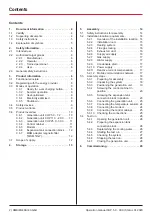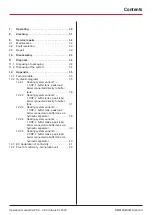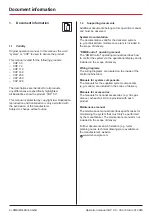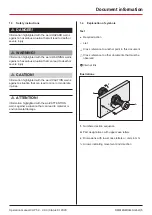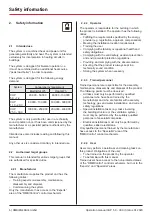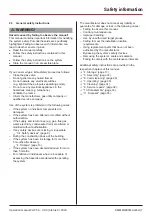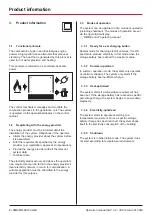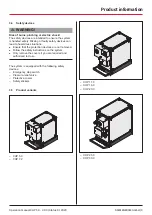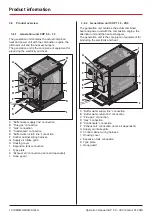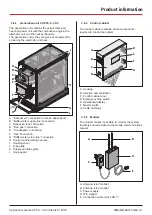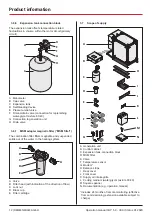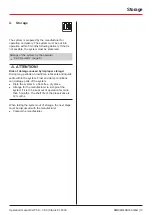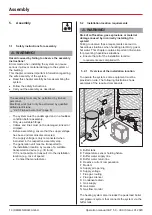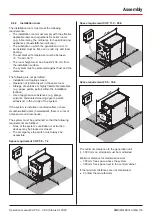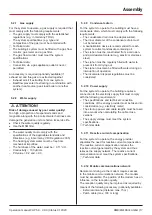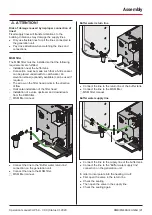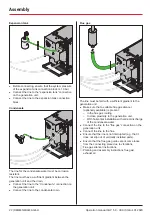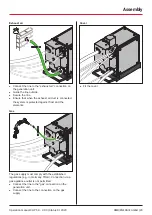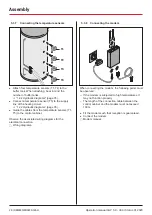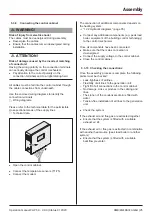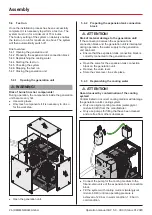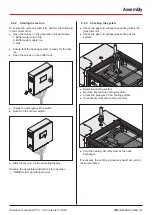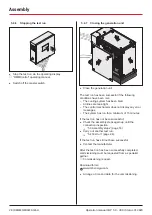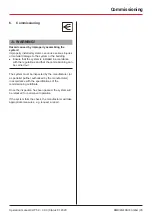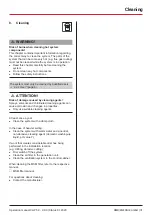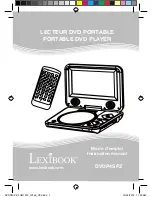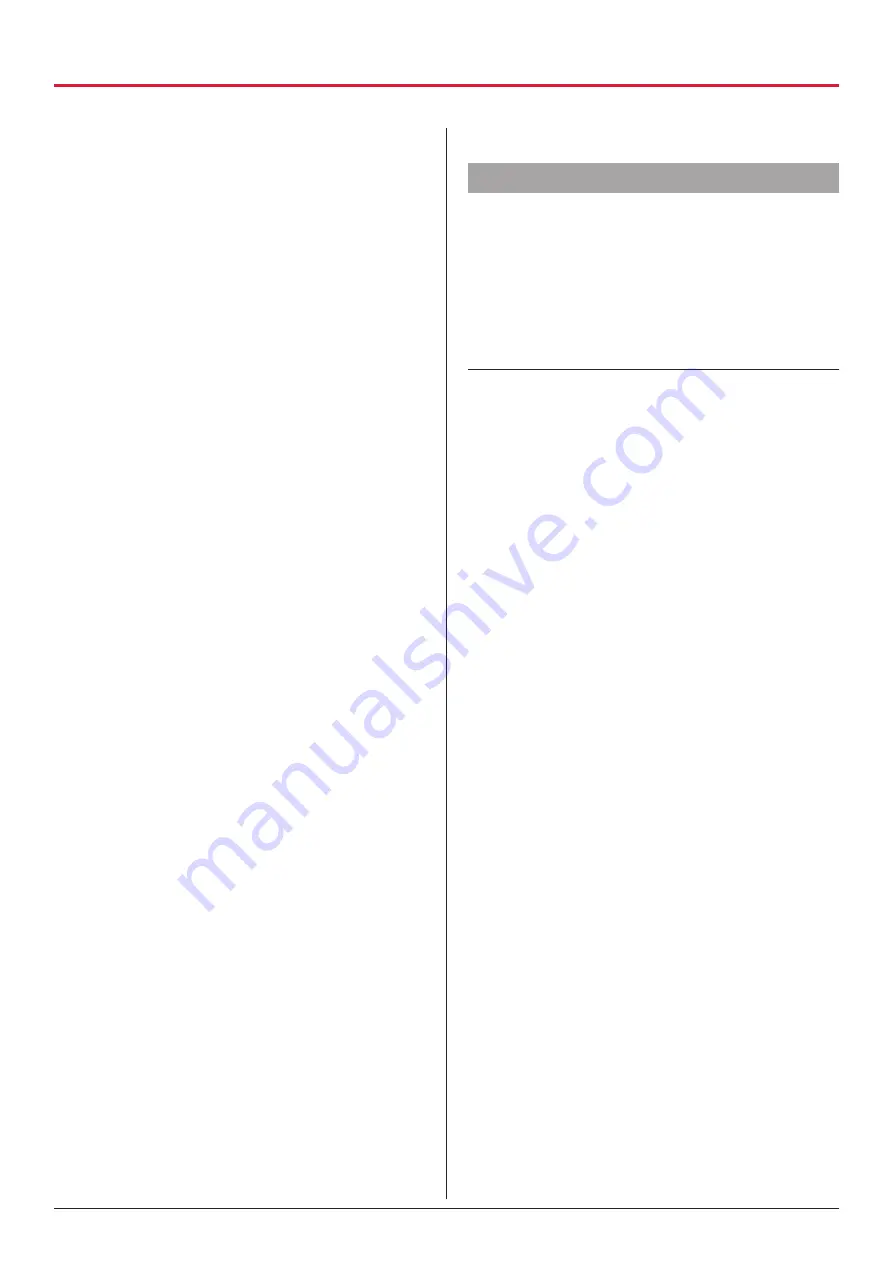
16 | RMB/ENERGIE GmbH
assembly
Operation manual CHP 5.0 - 30.0 | Status 01.2020
5.2.3 Heating system
The structural elements of the building’s heating
system primarily comprise the peak load boiler, the
buffer tank, and the pipework system and radiators.
The peak load boiler supplies the required residual
heat if the heating energy requirement exceeds the
capacity of the system (e.g. in extremely cold weather).
For the system to operate, a buffer tank is required,
which must comply with the following requirements:
B
The buffer tank must have holding fixtures for the
temperature sensors.
B
The buffer tank must have shut-off devices fitted on
the connections to the system.
B
The buffer tank must be designed to meet the
system specifications.
B
Minimum 100 litres per kW thermal
for installations < 10 kW
th
B
Minimum 50 litres per kW thermal
for installations > 10 kW
th
These specifications are technical minimum conditions.
Regional or national funding guidelines (e.g. in
accordance with BAFA in Germany) may differ and
must be checked.
The dimensioning of the pipework system must be
designed to meet the following requirements:
B
Maximum heat requirement of the building.
B
Maximum thermal capacity of the system.
5.2.4 Flue gas routing
For the system to operate, the building must
have a flue, which must comply with the following
requirements:
B
The local laws and regulations must be complied
with (e.g. in Germany, the building regulations).
B
The flue gas routing must comply with the local
regulations (e.g. in Germany, DIN 18160).
B
The flue gases must be removed via a flue.
B
As a fundamental rule, the flue must extract the flue
gases via the roof.
B
The dimensions for the exhaust gas ducting and
flue must be calculated on an individual basis.
B
The gradient of the horizontal section must be min.
5 cm per metre.
B
The flue must be inspected and approved for
operation (e.g. by a master chimney sweep).
B
A flue gas silencer must be fitted in the flue gas
routing. The flue gas silencer (optionally available)
must be installed near the generation unit.
B
The flue gas routing must have a water-filled siphon
at its lowest point.
5.2.5 Exhaust air duct
D
WARNING!
Risk of suffocation due to improper use of exhaust
air!
The exhaust air must not be used for heating purposes.
Poisonous gases may be produced inside the
generation unit that can lead to death by suffocation.
A
Ensure that the exhaust air from the generation unit
is guided outside.
A
Ensure that the supply air is not contaminated by
the exhaust air.
An accessory is required (optionally available) if
exhaust air and flue gas are extracted together:
B
Exhaust air kit if extracting from one system.
B
Backflow preventer if extracting in combination with
another heat source (peak load boiler or another
system).
Additional devices with exhaust air (e.g. washer-dryers)
may only be installed subject to consultation with a
suitable specialist or chimney sweep.
5.2.6 Supply air supply
Sufficient supply air must be supplied for the
combustion process and the ambient temperature:
B
The total requirement of the heating system (e.g. for
the peak load boiler) must be born in mind.
B
The supply air supply must meet the system
specification.
Technical data.
B
The supply air must not be supplied via a concentric
pipe if the inner pipe is used for flue gas routing.
B
If the ambient temperature in the installation room is
permanently above 30 °C, additional air exchange is
required.

